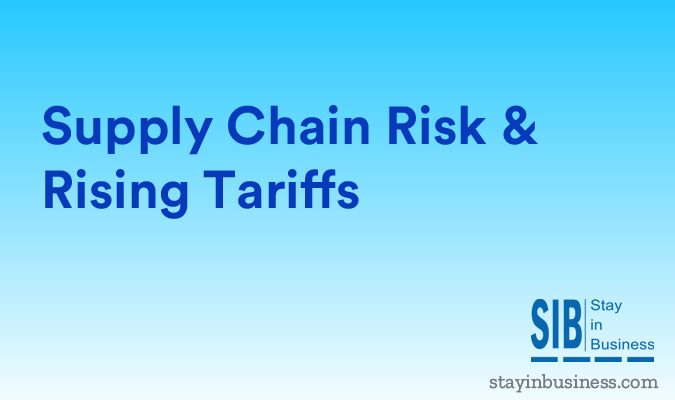Supply Chain Risks & Rising Tariffs

The mounting supply chain risks can’t be emphasized enough as the US-China trade face-off intensifies. Numerous product sectors are expected to take a hit as the USA plans on introducing a new set of tariffs on imports from China. The impact would be felt mainly in the consumer goods sector, including electronics, apparel, footwear and toys, and collectively accounts for business worth nearly $300 billion.
While these tariffs were initially slated to be introduced on September 1, shortly before the all important shopping season kicks off, the US administration has announced that the tariffs’ introduction will be deferred until December.
Throughout the last year, consumer goods companies have experimented with different supply chain risk mitigation techniques to offset the extra duties levied on their products. This includes shifting production out of China to countries where the trade scenario is less volatile and the manufacturing facilities and costs of production are similar. However, these frequent changes to the supply chain can take its toll on business in the longer run.
The first half of 2019 witnessed a 13 percent drop in Chinese imports to the US while those of Vietnam rose by 36 percent. It is not uncommon for companies in the consumer sector to shift production to other countries to cut back on expenditure.
Stable and secure supply chain networks that adhere to regulatory norms can only be built over time. Imprecise evaluation of prospective suppliers can have financial implications for the business. Many established firms developed their supply chain networks in China over nearly two decades. Suppliers are chosen based on the intelligence gathered from multiple assessments and the ability to comply with the organization’s policies and business norms.
Suppliers that satisfy these preliminary expectations are subject to further monitoring on an ongoing basis and are regularly audited to ensure compliance. Protecting supply chains requires time, monetary investments and resources. And they pay off in the long run through fewer operational outages and minimized exposure to compliance, community, environment and reputation related risks.
The constant volleying of threats between China and the United States might force companies to bypass these precautions in an attempt to not compromise on production volumes. This can turn into a serious issue as even facilities with the production capabilities to take up new assignments might slacken on quality.
In terms of production and quality, China has traditionally surpassed countries like Bangladesh, Malaysia and Vietnam. Experts observe that the recent shifting of networks to other countries in shortened time-frames makes business increasingly susceptible to supply chain risks pertaining to the exploitation of children, forced labor, environmental violation and the health and safety of workers.
For instance, about six years ago, police intervention during a protest conducted by 3,000 individuals at a Cambodian facility that produced Nike apparel resulted in 23 workers being seriously injured. Not so long ago, Amazon’s Chinese suppliers were alleged to have illegally resorted to child labor while fabricating Alexa devices. Such incidents can seriously impact brand perception, especially in the case of consumer facing brands.
Enterprises and stakeholders unanimously agree that effectively managing supply chains cannot be achieved without squarely addressing supply chain risks. And trade experts forecast commercial repercussions across many industries within the consumer goods sector owing to poor supply chain management.
While it’s still early days to determine how this movement of production across the borders and out of China will hamper consumer goods business, investment and investment stewardship teams might do themselves a good turn by collaborating with company management and board of directors to get better acquainted with how they are handling risks as they venture into new geographical territories.
This dialogue can be taken forward through predefined questionnaires and checklists that focus on industry specific risks and opportunities for growth that each company ought to consider. Factors to be considered include:
- Evaluating the health, safety and working conditions of supplier staff
- Mitigation measures to curb labor, environment, health, safety and other risks within the supply chain
- Determining company’s ability to handle risks associated with shifting networks across borders, based on the feedback of management and board of directors
Risk managers and their superiors would need to strike a balance between mitigating supply chain risks and maintaining production at an optimal level. However, despite precarious market conditions, investors can still rely on relevant and reliable information that provides the basis for effective decision making.
Categories: Supply Chain
